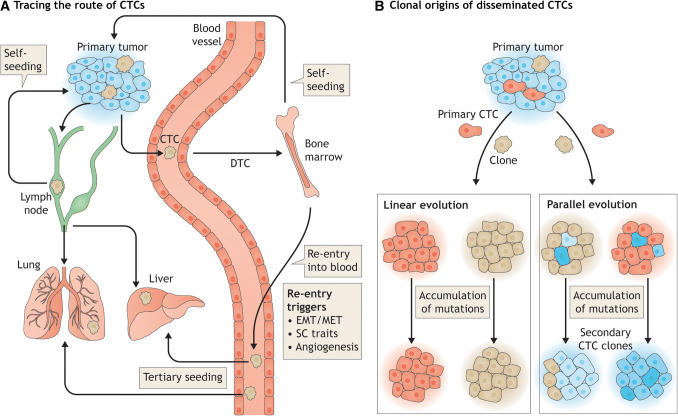Fig. 2.
Where do CTCs go after entry into the circulation? a Tracing the route of CTCs: CTCs originating from a primary cancer site, enter the circulation, and migrate to a permissive secondary site in a distant location; these CTCs in a secondary target organ are then designated as disseminated tumor cells or DTCs. Most CTCs migrate to the bone marrow through the blood or to the lymph nodes via the lymphatic system, where they may remain dormant for prolonged periods without forming metastases, followed by an active aggressive phase. This phase can be triggered by a combination of EMT/MET transition, acquisition of stem cell traits and the angiogenic switch, which together lead to the development of overt metastases or the re-entry of CTCs/DTCs into the circulation. Following entry into the circulation, CTCs either migrate to a tertiary metastatic site (such as the lung or the liver) or return to the primary tumor, in a phenomenon termed tumor self-seeding. b Clonal origins of disseminated CTCs: Two models of clonal evolution are proposed prior to CTC dissemination. In the first model, CTCs undergo linear evolution, sharing genetic signatures with the parent tumor. In the second model, CTCs undergo parallel evolution, with early dissemination and the acquisition of newer mutations during the process, thus generating genetic signatures that differ vastly from that of the parent tumor. Analysis of disseminated CTCs can provide details of their origins, thus aiding our understanding the prognosis, as well as, the development of tailored therapies

